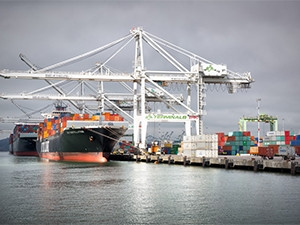
Transnet's application for a spectrum licence in the 1 800MHz band will not cause any issues for iBurst's network, as long as the parties work together, a Wireless Business Solutions (WBS) group executive told ITWeb.
This after ICASA received an application from Transnet for a radio frequency spectrum licence to use the 1 800MHz band centre gap at national ports and harbours - part of which is currently licensed to Wireless Business Solutions (WBS), which owns iBurst.
"As WBS, we respect the route ICASA has taken. We will be working together with ICASA and Transnet to try and facilitate, where possible, a solution for Transnet, subject to mitigating interference risks," Brandon Leigh, executive head of strategy and product development at WBS' holding company, Multisource, told ITWeb.
Transnet needs to replace old analogue voice radio systems with modern digital voice and data systems in order to manage its national port rail network operations. Transnet intends to use a total of 5MHz of the 1 800MHz band and the use will be confined to Port Elizabeth, Cape Town, Durban Port, East London, Saldanha Bay Port and Richards Bay.
BMI-TechKnowledge telecoms sector specialist Tim Parle says there is a gap or 'guard band' between the frequencies used for uplink and downlink in the 1 800MHz band. It runs from 1 785MHz to 1 805MHz.
"The likely application is for a private LTE system for broadband trunking as an alternative to the TETRA or other radio systems. Such systems have been deployed in areas such as ports and airports, and for large events like sporting events. Transnet would use it for its port operations with communications between personnel, vehicles, security teams, customs personnel, etc," Parle told ITWeb.
Transnet is already a holder of I-ECS and I-ECNS licences (electronic communications service and electronic communications network service licences) but in order to deploy a modern digital system, it requires spectrum suitable for long-term evolution technologies (LTE). Hence, Transnet has filed an application for a portion of radio frequency spectrum in the centre gap of the 1 800MHz band.
Co-existence
Leigh says the 5MHz that Transnet intends to use is quite close to the 10MHz that iBurst uses now, so there is a concern that interference could occur, but he believes if the parties coordinate and work together, they can mitigate this risk.
Parle says interference can occur if the systems are operated "in an uncoordinated manner".
"This is exactly what ICASA is trying to obviate and to promote the two organisations being 'good neighbours' and not harming each other's systems," Parle explains.
George Kalebaila, IDC senior manager for telecoms, media and Internet of things in Africa, agrees co-existence is possible.
"Transnet doesn't run a national mobile network so the spectrum will be used for its internal communication systems within port areas. Transnet's system will only have a small footprint so there will be less likelihood that it will significantly interfere with other networks like WBS ? so they can co-exist," he says.
iBurst's national coverage map shows it currently only has overlapping coverage in Durban, Port Elizabeth and Cape Town, and there will likely not be interference at the ports in East London, Saldanha Bay or Richards Bay.
Parle says the 1 800MHz band is not in particularly high demand as there are few applications for this band.
"To the best of my knowledge, the iBurst approach and the LTE approach are the only users. There may be some low-power applications like wireless microphones too."
ICASA yesterday invited interested parties to comment on the application by Transnet after it issued a notice in a Government Gazette on 5 October. All interested parties have 14 working days from the date of the Gazette publication to lodge written representations in relation to the application.
WBS announced last month that it is planning a multibillion-rand investment, over the next five years, to build a new high-speed 4.5G national data network in South Africa. The network will use WBS' existing spectrum assignments in the 1 800MHz and 2 600MHz bands for LTE-Advanced or 4.5G connectivity. The company says this will be a precursor to 5G, which will enable WBS to be at the forefront of 5G adoption globally when it occurs.
Share